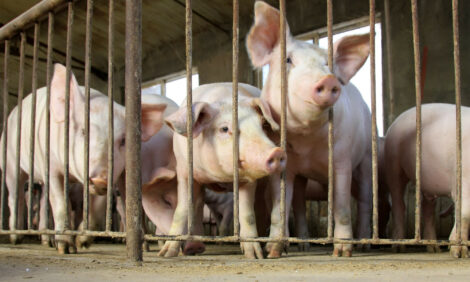



Market Preview: Domestic Pork Demand Holds Strong
US - "As we suspected, June was a very good month for domestic pork demand," writes Steve Meyer in this week's "Market Preview" report as published in National Hog Farmer magazine.With the receipt of USDA’s carcass-weight export data last week, we could complete our computations of the June demand indexes for the various species. All showed improvement over last year. That’s the good news.
The bad news is that demand for all three species was very soft during the first half of 2010 – the basis for the current comparisons. The challenge will be to keep them growing, relative to stronger 2010 months, the rest of this year, but let’s cross that bridge when we come to it. Stronger demand is stronger demand and we need to appreciate it and its impacts.
Figure 1 shows historic demand index data for the three major meat species. The last observation on the chart represents the index for the 12-month period ending in June. I use the lagging 12-month period for that last observation in order to include all of the seasonal (i.e. within a calendar year) variation that may exist in the demands for the respective products. The number obviously changes each month as one month is dropped and another is added. But the 12-month average is, I think, more fair than comparing a partial year’s data to entire years in the past. That comparison could be misleading one direction or the other, depending upon normal demand strength or weakness in a year’s early months.

Note that all three indexes are higher for the most recent 12 months vs. the same period one year ago. Chicken demand has increased because US consumers are buying more (due to higher output and lower exports this year) and have paid higher-than-expected prices for that quantity of chicken. Pork demand is higher because consumers have paid more than would have been expected given this year’s lower domestic pork availability. Lower quantity should yield higher prices, but pork prices have been even higher than expected given a steady demand and lower supplies.
I think the key feature of Figure 1 is that the downtrends in beef, pork and chicken demands may have stopped. I say "may have stopped" simply because we do not have all of this year’s data yet. The downtrends date back to 2004 and 2005, the peak years of the Atkins diet and other high-protein diets. Last year saw the downtrends slow or start to reverse. Year-to-date data for 2011 suggests US consumers may have turned the corner.
Measuring Pork Demand
Figure 2 shows another measure of pork demand that you are going to hear more about. Real per capita expenditures (RPCE) for pork has been chosen by the National Pork Board as the measuring stick for domestic pork demand. The number represents the average base-year dollars spent per person for pork. A constant base year (1991, in this case) is used to remove any impact of inflation. Per-capita consumption is used to remove the impact of a growing population. One implication of this feature is that even a steady RPCE number implies growth of the domestic pork sector since the US population grows by a short 1 per cent per year.

This measure of demand uses the exact same price, quantity and inflation data as the demand index calculations. The only difference between the two is that demand index uses an assumed elasticity of demand to compute the expected change in quantity for a given change in real price. RPCE just depends on the actual change in quantity and actual change in price, thus including the natural negative relationship between those numbers. If that relationship changes from year-to-year, the change will be reflected in the product of price and quantity, thus suggesting a shift in the demand curve for pork.
It is clear from Figure 2 that the last half of 2009, and the first half of 2010, were tough times for pork demand. The same can be said for beef and chicken. But beginning in July 2010, pork demand has been on a roll. RPCE for pork was 12, 17 and 10 per cent higher than one year earlier in October, November and December of 2010, respectively. The index has been higher every month this year than the corresponding month in 2010, with June coming in at 6.4 per cent higher.
Can the industry match last fall’s strong run? It will be tough. Those double-digit, year-on-year increases are the largest in my data set. That fourth quarter surge was exceptionally strong even relative to the fact that demand usually increases in the fourth quarter.
But there are three major factors that may keep the year-on-year growth going. The first two have to do with our competition – beef prices are high and chicken prices are going to start increasing. In spite of higher beef output and very large feedlot inventories, beef demand has kept cattle and beef prices relatively high. It now appears that tighter beef supplies may not hit until 2012, but even $170-plus Choice beef leaves plenty of pricing space for pork.
Chicken companies have finally started to reduce output after huge losses since last fall. Lower chicken supplies will push prices higher, but the key will be whether breast meat prices rise and the rate at which the increase occurs. Breast meat is a major competitor to pork in retail outlets, and I fear that breast supplies will be much slower to respond given the broiler sector's move toward more heavy boning birds in this most recent expansion.
Things still look good on the pork and hog demand side. Let’s hope a double-dip recession, should it occur, doesn’t spoil the good times.









